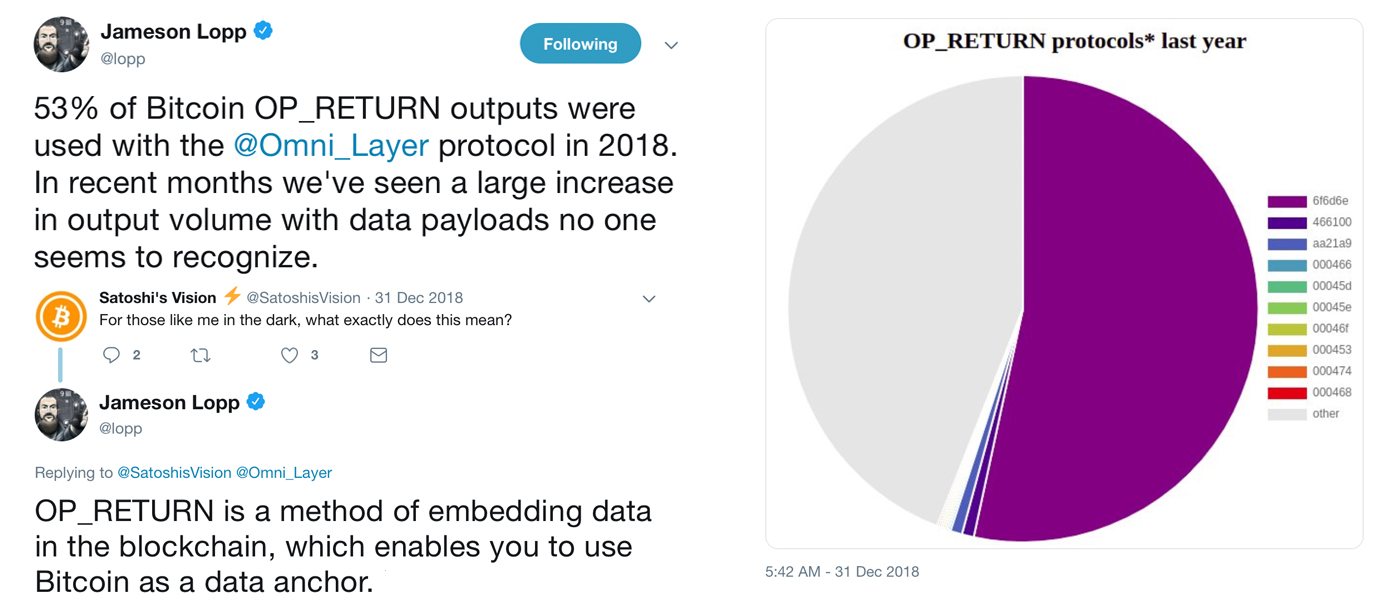Over the last few weeks, a blockchain project called Veriblock, whose protocol piggybacks off the Bitcoin (BTC) network, has sparked much debate among different Bitcoin-related communities. The use of the blockchain has been widely frustrating for experts considering that Veriblock’s system has been responsible for over a quarter of the transaction numbers on the entire BTC network.
Most people are not even aware, but due to the proof-of-proof (PoP) system that Veriblock uses, it requires many transactions to be written to the BTC chain. Veriblock is trying to establish another option for blockchain security, using OP return transactions and other types of transactions to embed an “SP blockchain transaction.”
Jameson Lopp, a BTC developer and CTO of Casa, discovered the abundance of Veriblock transactions on the blockchain and noticed they are now exceeding the number of BTC-based OP return transactions.

According to statistics published last week, Veriblock captures between 30% to 45% of transactions on a regular day. The project is still in testnet mode and has only recently caught the attention of cryptocurrency enthusiasts. A few other BTC community members have called the project “trash” and “garbage” and complained about “how it keeps spamming the network”.
As usual, there are various subjective opinions on whether or not some transaction use cases are spam. Most Bitcoin enthusiasts understand, though, that the network is permissionless by nature, and it really doesn’t matter as long as users pay for the block space. Veriblock believes other blockchains will be enticed by the PoP system because it gives them the ability to leverage BTC’s security and reputation.
“As a result, the reinforced security provided by PoP will encourage further adoption of these alternative blockchains,” Veriblock’s website details.
“The transition of transactions from Bitcoin to alternative blockchains will also facilitate Bitcoin scaling, while continuing to drive value back to Bitcoin miners.”
Another example of a cryptocurrency utilising Bitcoin’s blockchain to enhance its own security is, for instance, Komodo, a smart contracts platform similar to Ethereum, EOS, Tron, and NEO. In a nutshell, Komodo provides Bitcoin-level security through dynamic checkpoint notarisations between its own blockchain and the Bitcoin blockchain.
At the end of the day, any project using the Bitcoin blockchain to improve its own security is also increasing Bitcoin’s security. Because it’s kind of a give-and-take situation, I argue there are more advantages than drawbacks:
- Projects create transactions on Bitcoin, increasing the network’s adoption
- Projects promote increased decentralisation by owning their own Bitcoin nodes
- Projects write data to the blockchain, improving Bitcoin’s usability – as fees need to be paid to miners
The more projects that use Bitcoin, the better!
Disclaimer: The views and opinions expressed by the author should not be considered as financial advice. We do not give advice on financial products.
